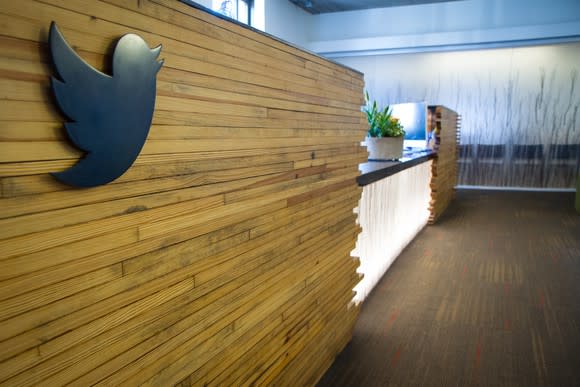Snapchat Will Bring in More U.S. Ad Revenue Than Twitter This Year
I've written about how Snap's (NYSE: SNAP) Snapchat is a bigger threat to Twitter (NYSE: TWTR) than any other social advertising platform for several years now. The two platforms offer similar communication and media-consumption tools, but Snapchat offers a much more engaging format than Twitter. As a result, Snapchat's U.S. ad revenue is expected to surpass Twitter's this year, according to eMarketer.
While Snap's growth since its initial public offering (March 2017) has been disappointing, investors have seen ad revenue declines at Twitter for several quarters straight. Both companies are struggling to provide value to marketers, ranking near the bottom in surveys on marketer sentiment.
eMarketer expects Snap's U.S. ad revenue to reach $1.18 billion this year, $20 million more than Twitter's.

Image source: Twitter, Copyright Aaron Durand (@everydaydude) for Twitter, Inc.
What Snap has that Twitter doesn't
Snap has a huge advantage over a lot of competitors: engagement.
Snapchat users spend an average of 35 minutes per day, with users under 25 spending over 40 minutes per day, in the app. That kind of engagement is rivaled only by Facebook (NASDAQ: FB) and Alphabet's YouTube. By comparison, users average just one minute per day on Twitter, according to media measurement company ComScore.
Snapchat also has more users than Twitter. While Twitter boasts 330 million monthly active users, it has about 164 million daily users, based on previous comments made by management. What's more, a growing majority of Twitter's users live outside the United States. By comparison, Snapchat ended the third quarter with 178 million daily users, 77 million of whom were in North America.
Finally, users spend the vast majority of their time on Snapchat creating and consuming video, which creates ample opportunities for video ads. Twitter is quickly shifting to more video, obtaining the rights to big events and sports, as well as co-producing content. In fact, video ads are now its biggest source of revenue. But as advertisers shift ad spend from television to digital video, Snap still stands to win a larger share of those video ad budgets than Twitter.
Headed in the wrong direction
Twitter's ad revenue declined in 2017, and eMarketer expects that trend to continue this year (at least in the U.S.). The expected $1.16 billion in U.S. advertising is a 4.5% decline over last year. That's actually slightly better than the 8% declines Twitter saw in its ad business in the second and third quarters of 2017, but still trending in the wrong direction.
Twitter's 2017 ad revenue decline can be explained by the company's decision to de-emphasize certain ad products near the beginning of the year. The continued decline can be explained by declining ad rates, the company's inability to truly engage its audience, and the stagnant user growth in the U.S.
Snapchat, for its part, isn't faring much better. User growth has continually disappointed since the company went public, and its self-serve platform shows the value of its ads is much less than what Snapchat had been asking for at fixed prices.
Both Snapchat and Instagram remain in the experimental bucket for most advertisers -- the majority of digital ad dollars still go to Facebook and Google. Even after Facebook saturated the ad load on its news feed, advertisers showed they'd rather spend more money on Facebook ads than shift some of their advertising to Snapchat or Twitter in the third quarter. Average ad prices on Facebook went up 35%, while average ad prices declined on both Snapchat and Twitter.
At least Snapchat continues to grow its ad business; the same can't be said about Twitter.
More From The Motley Fool
Suzanne Frey, an executive at Alphabet, is a member of The Motley Fool’s board of directors. Adam Levy has no position in any of the stocks mentioned. The Motley Fool owns shares of and recommends Alphabet (A and C shares), Facebook, and Twitter. The Motley Fool has a disclosure policy.

 Yahoo Finance
Yahoo Finance 